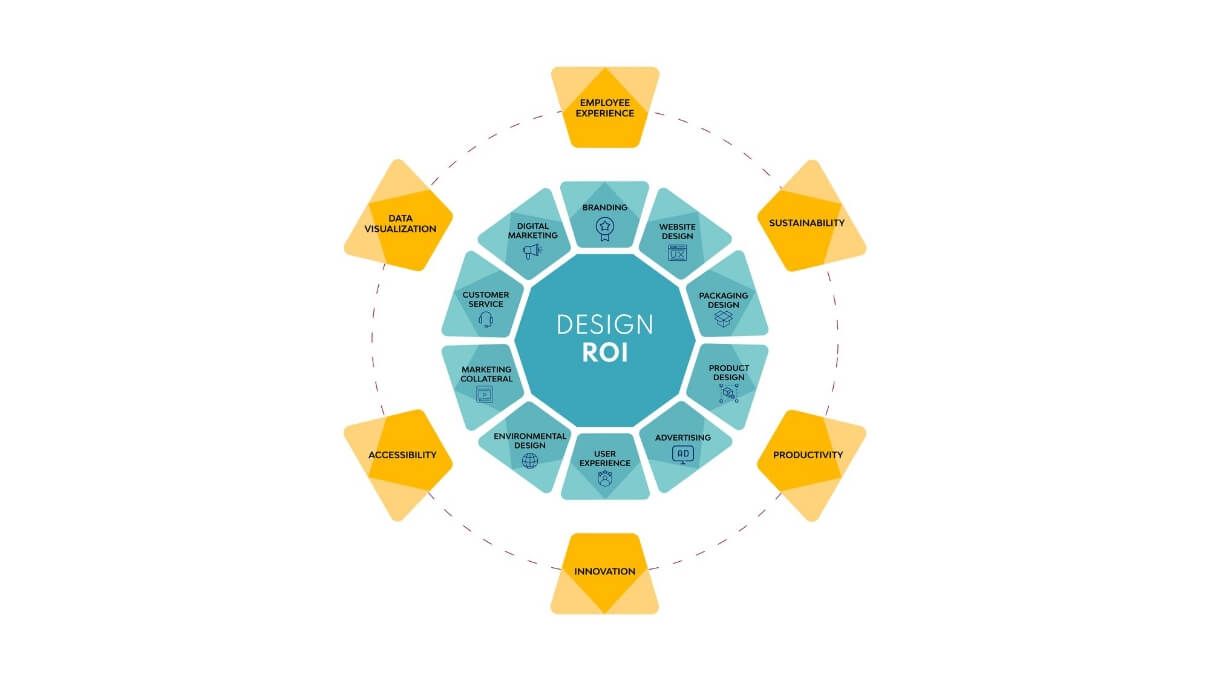In today's competitive market, businesses need to stand out to thrive. Many business owners believe that design is a superficial aspect that's not necessary for growth. But in reality, design plays a crucial role in attracting and retaining customers. A well-designed product or service can create a lasting impression on customers, leading to increased loyalty, a positive brand reputation, and ultimately higher returns on investment (ROI).
In this blog post, we'll discuss 10 key business areas where strategic design implementation can help boost your returns.
Branding: A strong brand can differentiate a business, create recognition, and promote a positive image. Investing in branding can build customer trust, loyalty, and sales.
Website Design: An easy-to-use and visually appealing website can boost engagement and conversions, while a poorly designed website may repel potential customers.
Packaging Design: Eye-catching product packaging creates a brand's first impression on customers. Investing in strategic design packaging can increase visibility, differentiate from competitors, and drive sales.
Product Design: Good product design improves both aesthetics and functionality, enhancing customer experience. Investing in design leads to customer satisfaction, loyalty, and word-of-mouth marketing.
Advertising: Clear messaging and visual identity in advertising campaigns boost brand awareness, generate leads, and drive sales.
User Experience (UX) Design: A well-designed user experience can make a product or service more intuitive, engaging, and easier to use, leading to increased customer satisfaction and loyalty.
Environmental Design: Investing in environmental design for a business's physical space can greatly impact customer experience and satisfaction, resulting in increased foot traffic, improved customer loyalty, and positive reviews.
Marketing Collateral: Consistently designed marketing collateral, such as brochures and business cards can enhance brand recognition, build customer trust, and generate leads.
Customer Service: Investing in well-designed customer service processes and systems can greatly impact customer satisfaction and retention, resulting in increased customer loyalty and positive reviews.
Digital Marketing: Digital marketing efforts designed with a consistent visual identity, such as social media posts and email campaigns, can enhance engagement, brand awareness, and sales.
Investing in strategic design can have a significant impact on a business ROI across many areas, from branding to advertising to customer service. By focusing on these areas, businesses can expect to see a significant return on investment and a competitive advantage in their respective industries.
What are the other KRAs apart from the above 10?
There are other key result areas (KRAs) in which strategic design can have a significant impact on a business's success. Some of these KRAs include:
Employee Experience: Designing a functional, comfortable, and visually appealing workspace can greatly improve employee satisfaction, productivity, and well-being, resulting in reduced absenteeism and turnover, increased employee engagement, and improved business performance.
Sustainability: Investing in sustainable design practices can help a business reduce its environmental impact, reduce waste and create a more positive brand image. Sustainable design can include everything from designing energy-efficient buildings to using eco-friendly materials in product design.
Productivity: Sustainable design practices can reduce a business's environmental impact, minimize waste, and enhance brand image. It involves creating energy-efficient buildings and using eco-friendly materials in product design.
Innovation: Investing in design research and innovation can help businesses create unique products, services, and business models, setting them apart from competitors and driving long-term success. It involves market research to identify unmet customer needs and develop new technologies that revolutionize industries.
Accessibility: Designing products, services, and digital experiences with accessibility in mind can expand a business's market reach and create a more inclusive brand image. It involves optimizing websites and mobile apps for screen readers and creating easy-to-open product packaging for people with disabilities.
Data Visualization: Designing effective data visualization can help businesses make informed decisions, improve communication, and drive success. It involves creating clear dashboards with visual indicators of key performance indicators and using charts and graphs to simplify complex data sets.
In conclusion, each of these six KRAs presents an opportunity for businesses to leverage design to achieve their goals and improve their bottom line. By investing in these areas, businesses can unlock the full potential of design and achieve success more efficiently and effectively.
If you wish to know more, follow us on LinkedIn for more articles on the ways to boost your business ROI.
